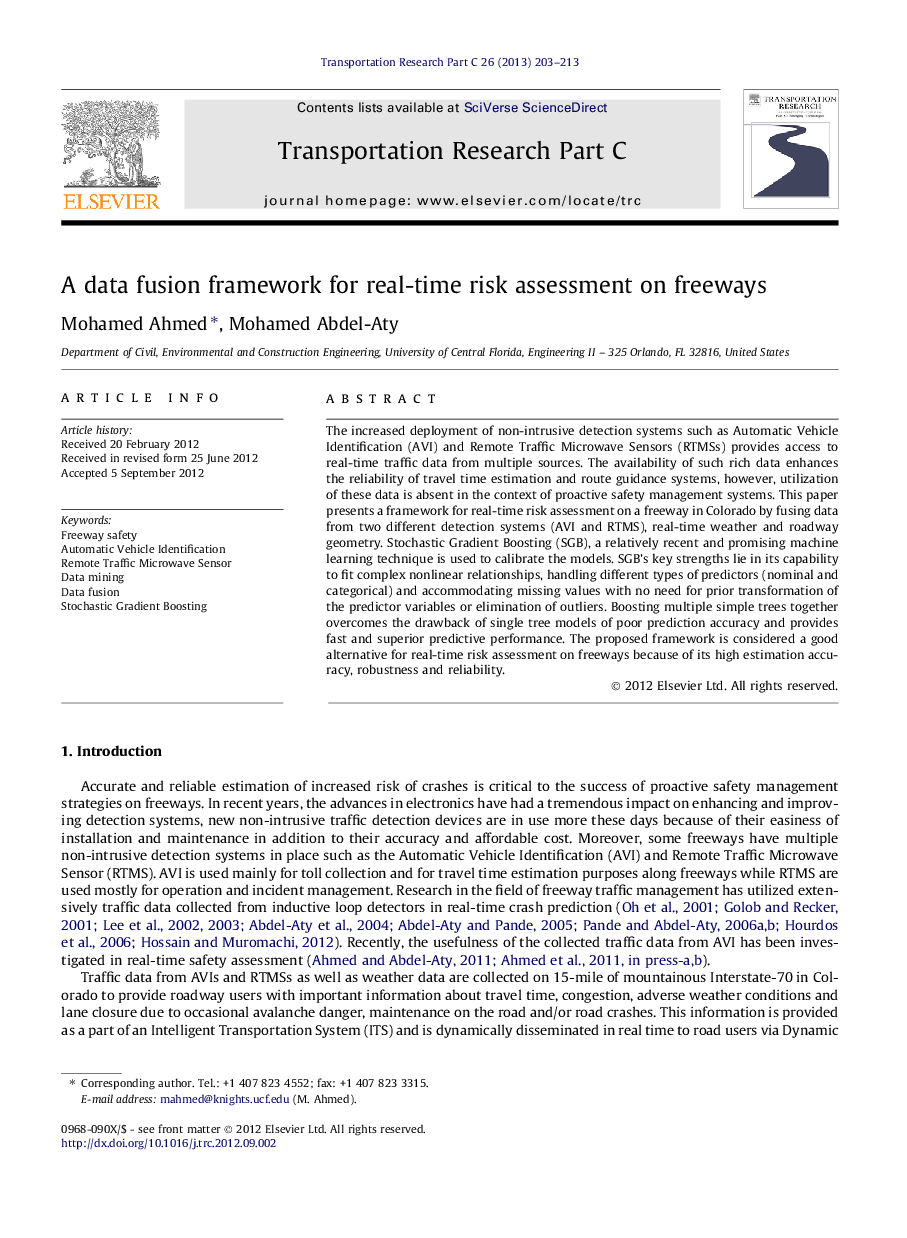| Article ID | Journal | Published Year | Pages | File Type |
|---|---|---|---|---|
| 525067 | Transportation Research Part C: Emerging Technologies | 2013 | 11 Pages |
The increased deployment of non-intrusive detection systems such as Automatic Vehicle Identification (AVI) and Remote Traffic Microwave Sensors (RTMSs) provides access to real-time traffic data from multiple sources. The availability of such rich data enhances the reliability of travel time estimation and route guidance systems, however, utilization of these data is absent in the context of proactive safety management systems. This paper presents a framework for real-time risk assessment on a freeway in Colorado by fusing data from two different detection systems (AVI and RTMS), real-time weather and roadway geometry. Stochastic Gradient Boosting (SGB), a relatively recent and promising machine learning technique is used to calibrate the models. SGB’s key strengths lie in its capability to fit complex nonlinear relationships, handling different types of predictors (nominal and categorical) and accommodating missing values with no need for prior transformation of the predictor variables or elimination of outliers. Boosting multiple simple trees together overcomes the drawback of single tree models of poor prediction accuracy and provides fast and superior predictive performance. The proposed framework is considered a good alternative for real-time risk assessment on freeways because of its high estimation accuracy, robustness and reliability.
► A data fusion of multiple detection systems, weather and roadway is presented. ► A recent data mining technique (Stochastic Gradient Boosting) is utilized. ► Different scenarios of real-time data availability are considered. ► The proposed framework achieved reliable and robust prediction performance.
